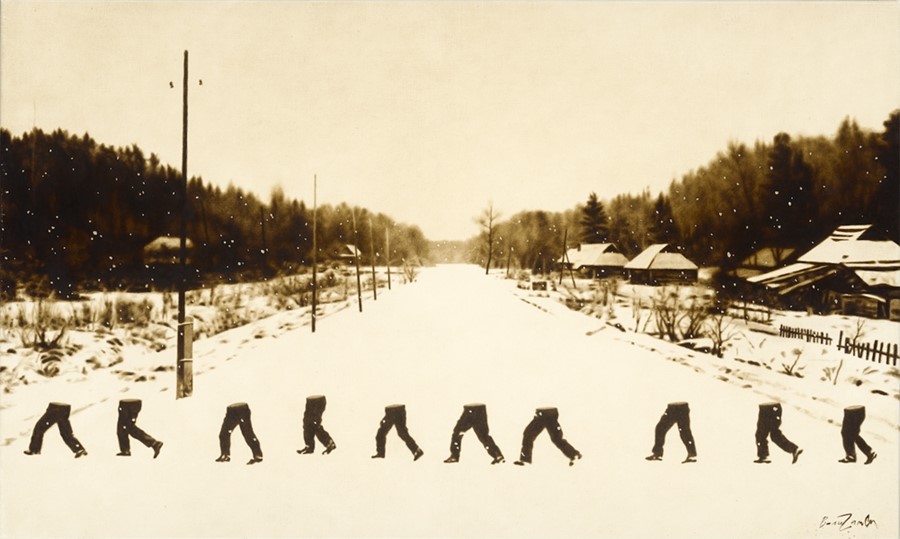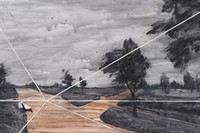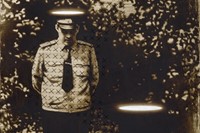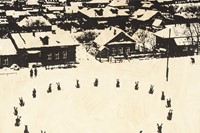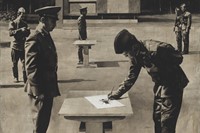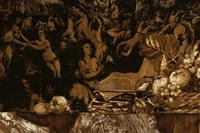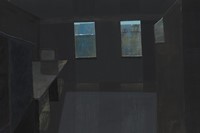Past, Present & Future is an enlightening bite-sized journey through half a century of Russian art brought together by the celebrated curator Diego Giolitti. Taking into its sway both legends of the non-conformist movement...
Past, Present & Future is an enlightening bite-sized journey through half a century of Russian art brought together by the celebrated curator Diego Giolitti. Taking into its sway both legends of the non-conformist movement, such as Vladimir Ovchinnikov, and virtual unknowns, such as the 24-year-old painter Denis Patrakeev, it perfectly illustrates how the perception of art as a political force for social change in Russia has given way to a somewhat less heavy-handed and, arguably, more reflective generation, who cleverly question the societal paradigm of their environs in stunningly innovative ways. In a fast-changing world, it’s a fascinating glimpse into a society still finding its identity in terms of contemporary art, and into those artists who have come to define the contemporary landscape. The exhibition was conceived in support of the Gift of Life Foundation, which supports children with cancer, with thirty per cent of proceeds going towards the acquisition of expensive drugs currently unavailable in Russia. Here, Giolitti discusses the evolution of Russian contemporary art, why the non-conformist movement remains a relevant touchstone for dissident artists all over the world, and why the ability to divest oneself of knowledge is absolutely priceless.
The exhibition is called Past, Present, Future and is presented chronologically, where does it all begin?
We start the exhibition with the non-conformist movement, specifically with Vladimir Ovchinnikov – one of the initiators of the movement with his fantastic illegal exhibition at the Hermitage in 1964. Perhaps the most interesting thing about him is that he wasn’t overtly political, he didn’t particularly care for fighting the government, he simply fought for the freedom to express himself and use the symbolism he wanted to use – symbolism that was forbidden. Then we have Vyacheslav Mikhailov who was born in 1945 and also represents this movement. To be honest, he wasn’t really part of the non-conformists but is still, in a way, considered one of those artists who didn’t comply with the rigid rules of the soviet government with regard to art. I also chose him because he represents Russia with the technique he uses. In his work, he adopts the same materials used to make religious art for centuries in Russia, known as levkas [a thick mixture of glue and alabaster dust used in religious icons], and this material is very three-dimensional, and a very traditional link to Russia. However, what he does is use this technique to create abstract visions of specific places, and he does this with the map of Russia.
Why do you feel these artists are still important now?
I specialised in Iranian studies at Cambridge, and when I interviewed contemporary Iranian artists I found that they had been studying these Russian artists – they became kind of a landmark for them, because after the Islamic revolution the people found themselves in the same situation; trying to fight against the strict rules of the government. This is true not only in Iran but also in China – Ai Wei Wei has also mentioned the non-conformist movement as an influence. What that tells me is that this is not just something in the past – it’s still happening. There is a link between the non-conformist art movement in Russia and dissident art now in many different areas of the globe.
How have these artists defined the contemporary arena in Russia, and who are the rising art stars?
Representing the present in the show, we have works from Rinat Voligamsi – the youngest artist to be given the State Prize of Russia for art and literature [in 1994] – and he speaks a language that is very obvious because he has this real desire to connect, and for his audience to understand his ideas. It’s very smart what he does, because he uses the past to talk about the present and validate his contemporary ideas. He became very famous for his Lenin project The Unofficial Album, in which he collected images of Lenin and created an alternative life history of Lenin, where he converted to Islam. As you can imagine, the audience reaction was very strong in Russia. It’s an interesting process – what he does is collect historical pictures relating to the subjects he wants to talk about, then he studies the pictures, puts them aside, and creates work inspired by what he remembers. It’s quite interesting that what he does is somewhere in between photo-realism and surrealism, and in order to balance that you need to be a great artist and philosopher.
"It’s very important to me that all of the artists exhibiting here are truly Russian and proud of who they are"
How did you come to group this particular cabal of artists together for the show?
It’s very important to me that all of the artists exhibiting here are truly Russian and proud of who they are. What is happening too much nowadays in Russia is that artists go to the Academy of Fine Arts, where they are very scholastic and learn how to copy old masters, or in the majority, to imitate the west, and they forget about their own identity. This is very dangerous because it isn’t something that says anything – it has no message. The thing is that contemporary art is still a relatively new concept in Russia, and the young artists don’t know how to express themselves. There are, of course, exceptions that can be very innovative, such as Ilya Gapanov who retains the 17th century tradition of Vanitas in his work and the pictorial religious tradition, but executes them in a thoroughly modern way. Then we have Denis Patrakeeev. He is only 24. I think he already has immense strength in his technique, and, again, he talks about his own culture and his place within it. The empty playgrounds he paints, for example, are about the playgrounds in Russia becoming empty, because the new generation aspire to leave their homeland. So, what is going to happen? No children. He is very concerned about that.
Why is it important to you that these young artists don’t take their lead from contemporary art in the West?
When I was talking to these artists about this show I gave them an example that helped them understand why it’s important. In medieval Iran there was a philosopher that wrote a manual about how to become a poet. Medieval Persian poetry had very, very strict rules – they had to use the same rhythms, rhymes, words, so they had to be innovative with the same tools. So, this philosopher’s notion of how to become a good poet was that you had to learn at least 30,000 verses and couplets from other poets – and that was the easy part, the hard part was to forget them, and basically Russian artists have to do the same. Obviously, we can all be inspired by international artists – no matter where they are from – but in the meantime, we have to find our own identity, so, we can study them yes, but we also have to forget them.
Past, Present, Future is at the Erarta Galleries London until April 28.
Text by John Paul Pryor
